IAMISIGO Is the Breakout Brand of Copenhagen Fashion Week


If there’s one way to describe Bubu Ogisi’s approach to design, it’s fluid. From sourcing materials and craftspeople across different countries in Africa to presenting her brand IAMISIGO to a Western audience during Copenhagen Fashion Week, her fashion has always taken on a transformative nature, rooted in the deep history of ancestral memory and a keen eye for innovative design.
IAMISIGO has always been dedicated to preserving traditional textile techniques within a modern context—though at a slower, more intentional pace. Ogisi’s experimental designs, from hand-blown glass bags to crochet pieces made from fishing twine, have been worn by renegade style icons including Julia Fox and reached global platforms, like the hand-cut bronze dress she made for Naomi Campbell—an early supporter of the label—in partnership with the Victoria’s Secret’s 2023 World Tour.

Naomi Campbell wearing IAMISIGO at the Victoria’s Secret World Tour in 2023.
Previously, Ogisi showed at Lagos Fashion Week; however, in January of this year, the brand won the 2025 Zalando Visionary Award, which champions designers at the forefront of innovation and social impact. (Last year’s winner was Sinéad O’Dwyer, who is known for her body-inclusive casting and designs.) All participants must meet CPHFW’s sustainability requirements to be considered. Ogisi received a monetary award of €50,000, mentorship, business resources, and an additional €35,000 for her spring 2026 show at CPHFW, which took place just last week.
The spring 2026 show, as a result, ushered in a new platform for the brand—one with which Ogisi felt aligned and ready to engage. “In Nigeria, the energy is raw, immediate, and deeply personal—there’s an intimacy in showing for a community that already shares so much of the cultural context,” she tells ELLE, comparing the two runway experiences. “In Copenhagen, the challenge and opportunity was in translation: making the work resonate across different cultural frameworks without losing its core meaning.”
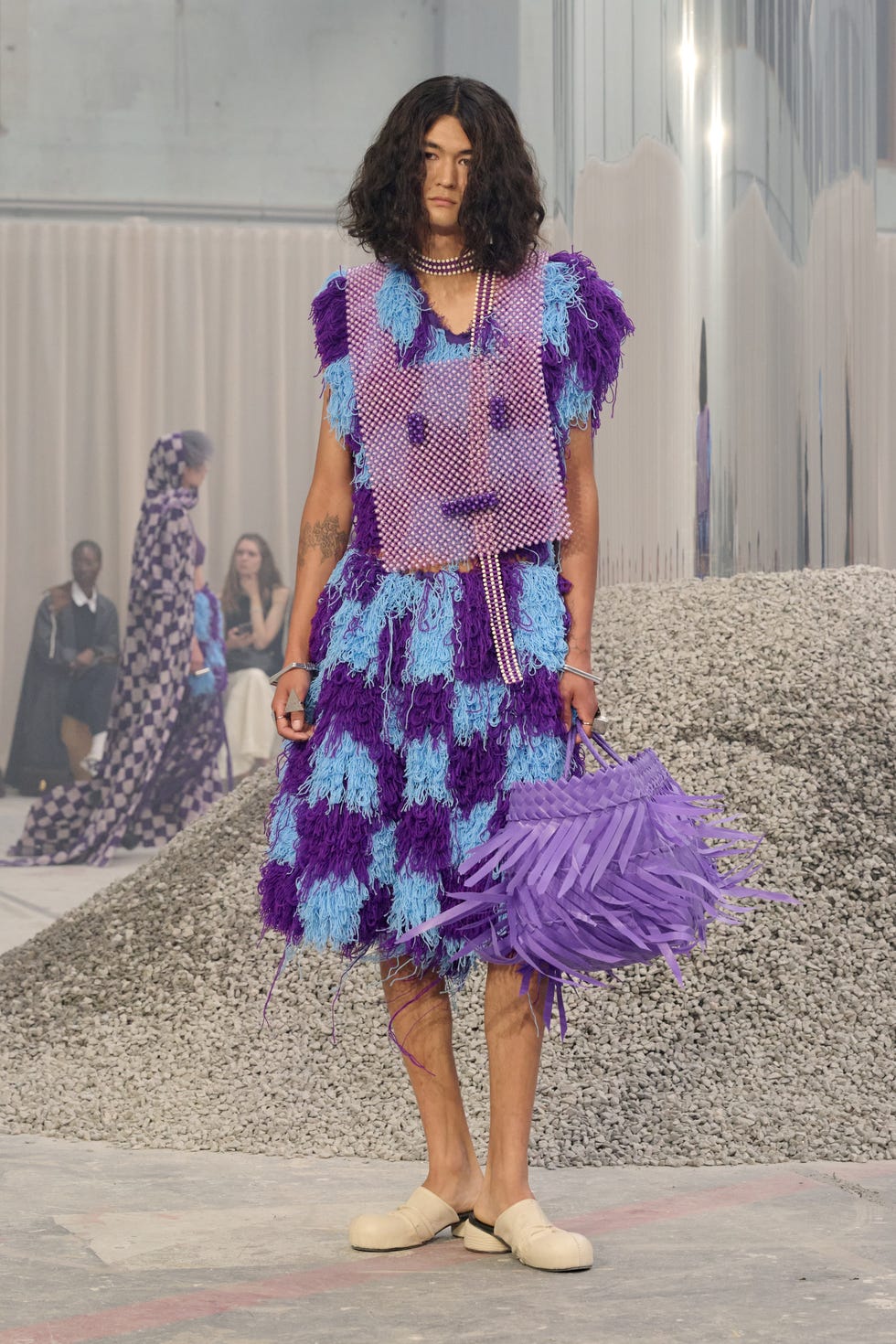
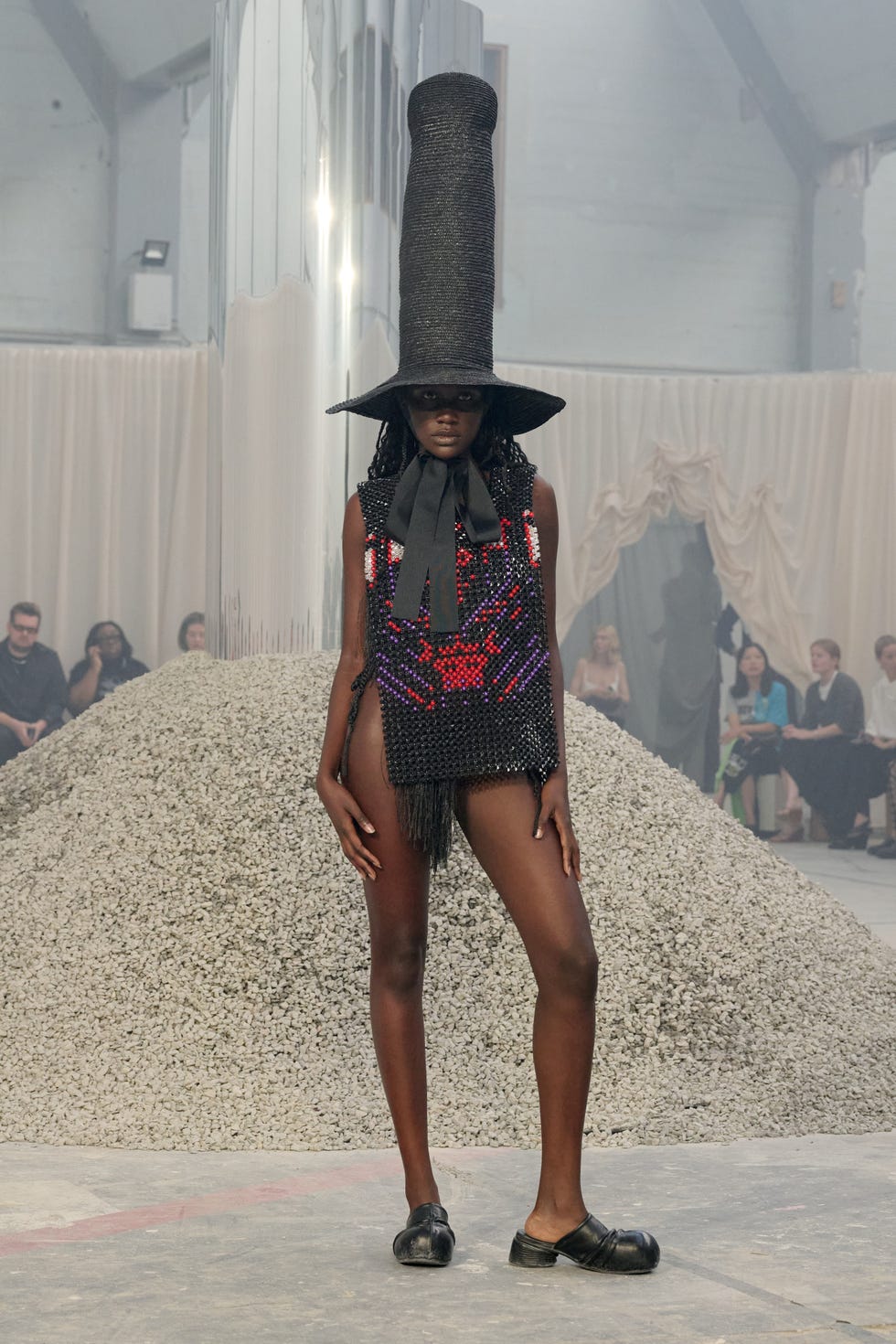
Titled “Dual Mandate,” the collection was subtly inspired by the colonial doctrine of British soldier Lord Lugard, “a text that held opposing ideals side by side: exploitation and uplift, commerce and civilization,” as described in the show notes. Instead of perpetuating this ideology, the collection flipped these ideas on their head, instead exploring the duality of “self-preservation and perception” and “protection and openness.”
The result was a vibrant and avant-garde array of garments, including fringed yet sculptural dresses, towering hats, reflective metal dresses, and more signature glass accessories. As she added in the show notes, the eclectic designs were not meant for spectacle, “but for energetic alignment,” as if the body and environment were one.
Below, Ogisi delves into her design process, the core tenets of her brand, and what she would like to see more of from the global fashion industry.
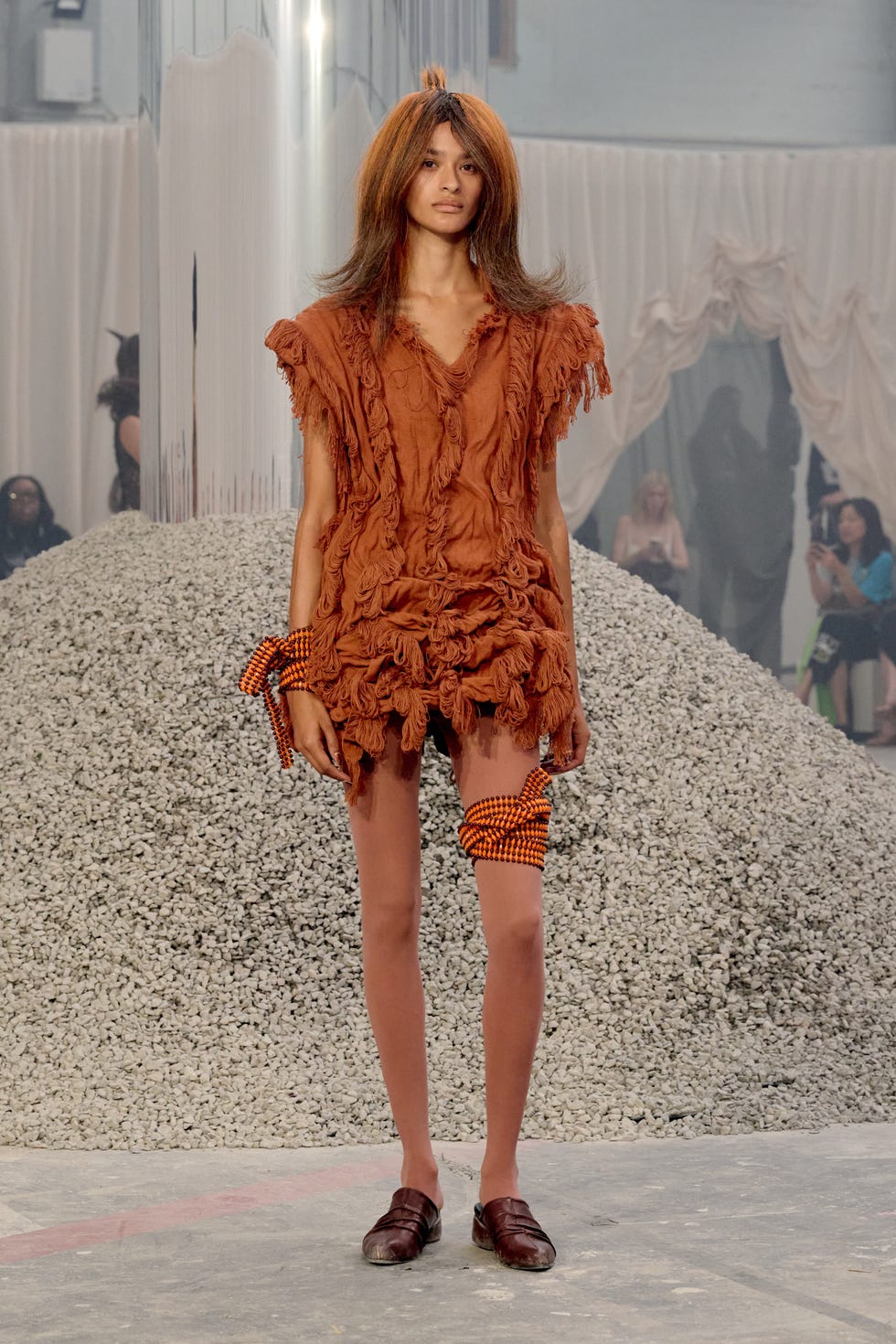
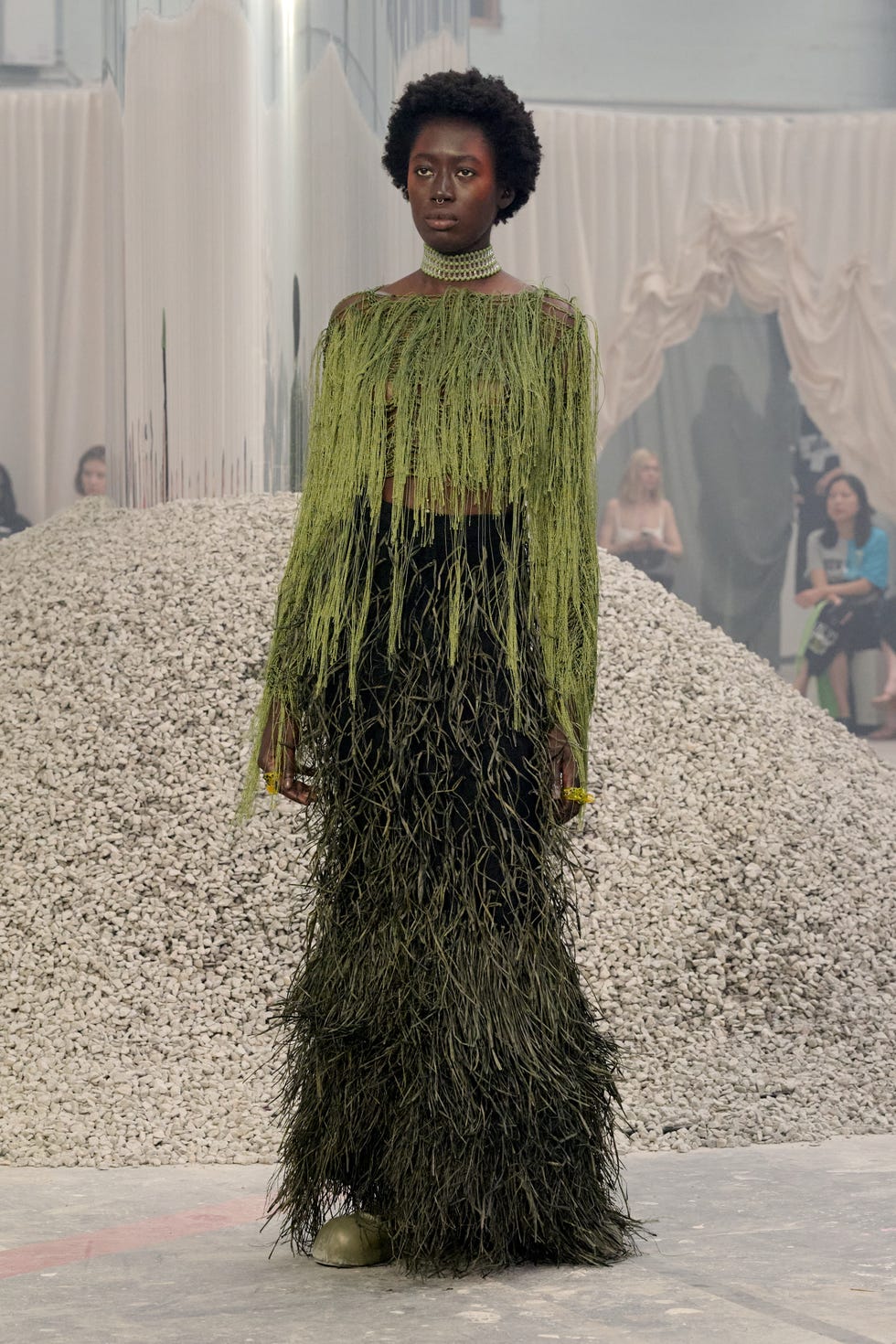
IAMISIGO began as an independent label [in 2009] and rebranded in 2013, growing into a contemporary wearable art brand based between Lagos, Nairobi, and Accra.
What are your key inspirations for your designs?Its vision is rooted in preserving African textile traditions, using clothing as a canvas to communicate memory, culture, and sociopolitical ideas. Our key inspirations come from ancestral knowledge, lost historical narratives, and the spiritual act of decolonizing the mind.
How and where do you source your textiles?Our textiles are sourced through deep, long-term collaborations with artisans across the African continent—whether it’s indigo dyers in West Africa, cotton weavers in East Africa, or experimental fiber creators in remote regions.
What does the production for these textiles then look like?Each piece begins with extensive research into traditional techniques, which are then reinterpreted with contemporary and sometimes unconventional materials, including upcycled waste fiber. Production is 100 percent artisanal, often requiring weeks or months of handwork, and always considers the working methods, environment, and cultural context of the artisans involved.
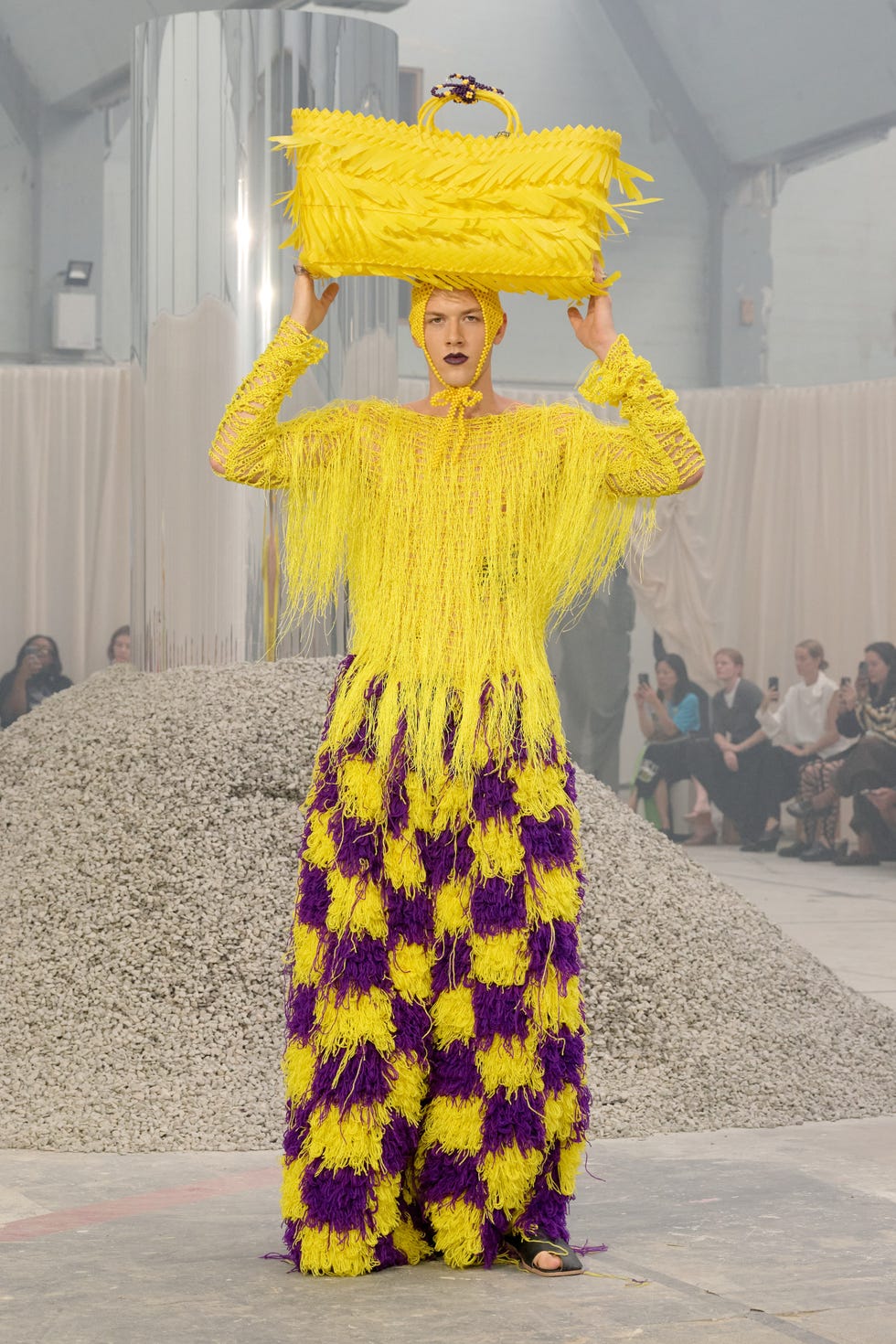
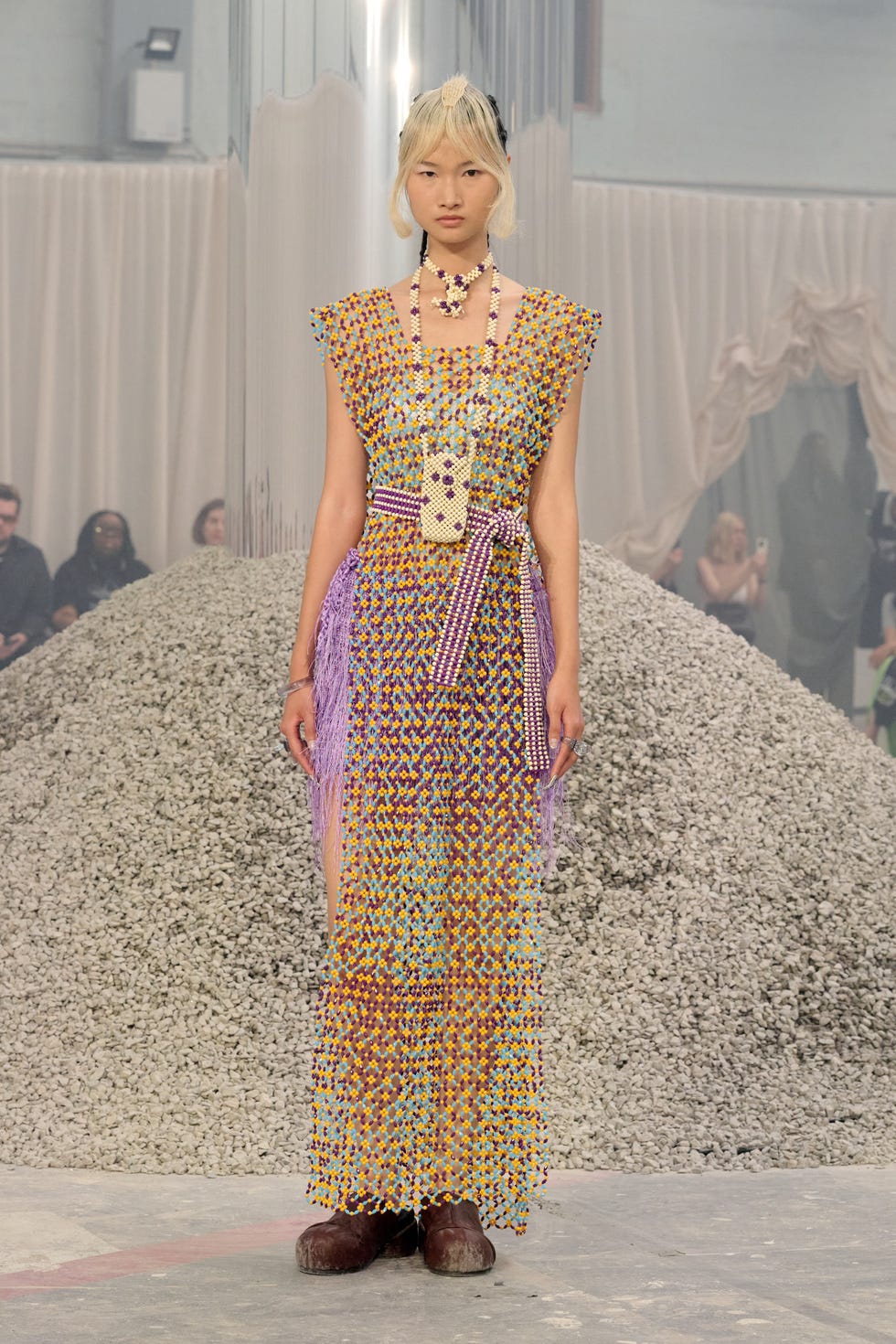
Every collection begins with memory—ancestral, personal, and collective. The process involves researching stories, symbols, and spiritual practices that have been obscured or erased, then translating them into textile and garment form. Spring 2026 was a meditation on resistance and ritual: a dialogue between tradition and futurism, form and fantasy over function.
With the Zalando Visionary Award, how do you hope to grow your brand from here, and what message would you like people to take away from your designs?The Zalando Visionary Award provides a platform and resources that will allow us to deepen our work with artisans, invest in research, and expand our presence in new markets while staying true to our ethos. We want people to know that IAMISIGO is not just about fashion—it’s about community, technology, spirituality, cultural preservation and innovation. It’s proof that heritage craft can be a living, future-facing language.
Looking forward, what would you like to see more of from the fashion industry?We’d like to see more genuine investment in cultural exchange—platforms that don’t just borrow from heritage aesthetics but actively collaborate with and credit the communities behind them. More slow, intentional processes over fast output. And a recognition that sustainability is not only about materials but also about preserving the knowledge systems, craftsmanship, and ways of making that have sustained communities for generations.
Alexandra Hildreth is the Fashion News Editor at ELLE. She is fascinated by style trends, industry news, shake-ups, and The Real Housewives. Previously, she attended the University of St Andrews in Scotland. Following graduation, she moved back to New York City and worked as a freelance journalist and producer.
elle





